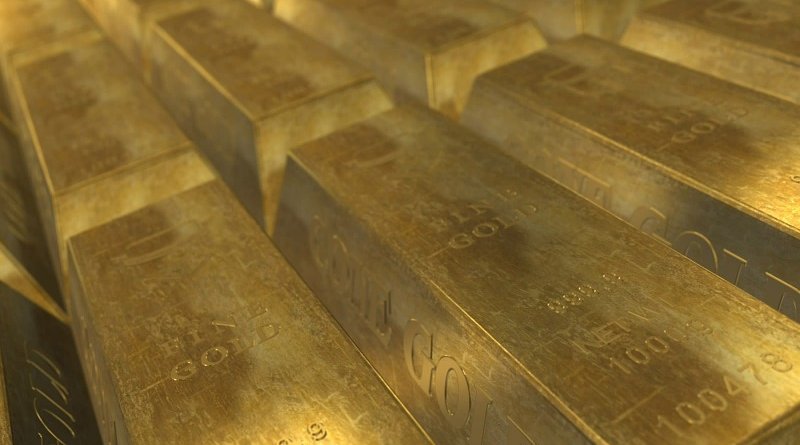By Vincent Cook
As of October 20, 2025, the price of gold has skyrocketed, multiplying 2.6 times since October 2022. This dramatic rise has sparked concerns among many that the US dollar and the global financial system may be facing serious instability. Is this surge in gold prices indicative of a deeper monetary crisis, or is it merely a fleeting phenomenon?
Divergent Views from Central Bankers
The recent surge in gold prices has prompted central bankers to address uncomfortable questions about the stability of fiat currencies. During a Q&A session at a convention of business economists on October 14, Federal Reserve Board Chairman Jerome Powell offered a notably dismissive perspective. When asked about the implications of rising gold prices, Powell stated:
“I’m not going to comment on any particular asset price, including that one. We think of inflation as driven by fundamental supply and demand factors. It’s not something we look at actively.”
Powell’s stance suggests that the Federal Open Market Committee (FOMC) views gold as just another commodity, one that contributes minimally to the overall demand for dollars. In his view, gold’s price fluctuations are insignificant in the grand scheme of monetary policy.
In stark contrast, European Central Bank President Christine Lagarde provided a more alarming interpretation during an October 19 appearance on CBS’s Face the Nation. Lagarde acknowledged that:
“I see signs that the attraction of the dollar is slightly eroded… Gold is typically, in any situation, the ultimate destination for safe haven. Price of gold has increased by more than 50% since the beginning of the year.”
Lagarde’s comments suggest that the rising price of gold reflects a growing lack of confidence in the dollar as the world’s primary reserve currency. She emphasized the importance of geopolitical credibility, rule of law, and strong institutions in maintaining trust in a currency.
The Importance of Gold in Global Reserves
Empirical data supports Lagarde’s concerns. Recent reports indicate that official reserve holdings of gold have surpassed those of US Treasury securities for the first time since 1996. This shift suggests that central banks may be increasingly turning to gold as a reliable asset, further indicating a potential erosion of trust in the dollar.
Gold has historically served as a hedge against inflation and currency devaluation. Its intrinsic value, unlike fiat currencies, does not rely on the trustworthiness of a government or central bank. As such, it remains a critical component of the reserves that central banks use to stabilize their currencies.
Economic Theory and Historical Context
Lagarde’s views align more closely with economic theory and historical precedent than Powell’s dismissive attitude. The fundamentals of monetary supply and demand, as articulated by economist Murray Rothbard, highlight that while governments can compel domestic use of their currencies, they cannot prevent citizens from seeking alternatives, especially during times of economic uncertainty.
The anticipated future purchasing power of money is a crucial factor in this discussion. If a currency is perceived to be depreciating, individuals and nations may seek to hold assets that retain value, such as gold. This behavior is particularly pronounced when trust in the issuer of a fiat currency wanes.
The Role of Trust in Currency Stability
Trust in a currency is paramount, especially for a global reserve currency like the US dollar. Foreign entities must rely on the issuer’s ability and willingness to honor its obligations, such as US Treasury securities. If the issuer falters—whether through fiscal mismanagement or geopolitical tensions—foreigners may seek alternative reserves.
Gold stands out as a unique asset that does not depend on the creditworthiness of any government. It is a tangible asset with a long history of maintaining purchasing power, making it an attractive option during times of uncertainty.
Conclusion: A Shift Towards Gold?
The soaring price of gold may indeed signal a shift in global financial dynamics. While Powell downplays the significance of gold, Lagarde’s observations suggest that many are turning to gold as a safe haven amidst growing concerns about the dollar’s stability.
As history has shown, trust in fiat currencies can erode gradually, only to collapse suddenly. If the current trends continue, we may witness a renewed emphasis on gold as a reliable store of value and a potential replacement for fiat currencies.
In the end, the world may be turning to gold, and the implications of this shift could reshape the landscape of global finance for years to come.
About the Author: Vincent Cook holds a MA in Biophysics from the University of California, Berkeley. With three decades of experience as an analyst for the University of California’s Office of the President, he has reported on various aspects of the university system. A supporter of the Mises Institute since its inception, Vincent has also hosted the Epicurus & Epicurean Philosophy website since 1996. He is an avid practitioner of Filipino martial arts and has competed in world championship matches.




